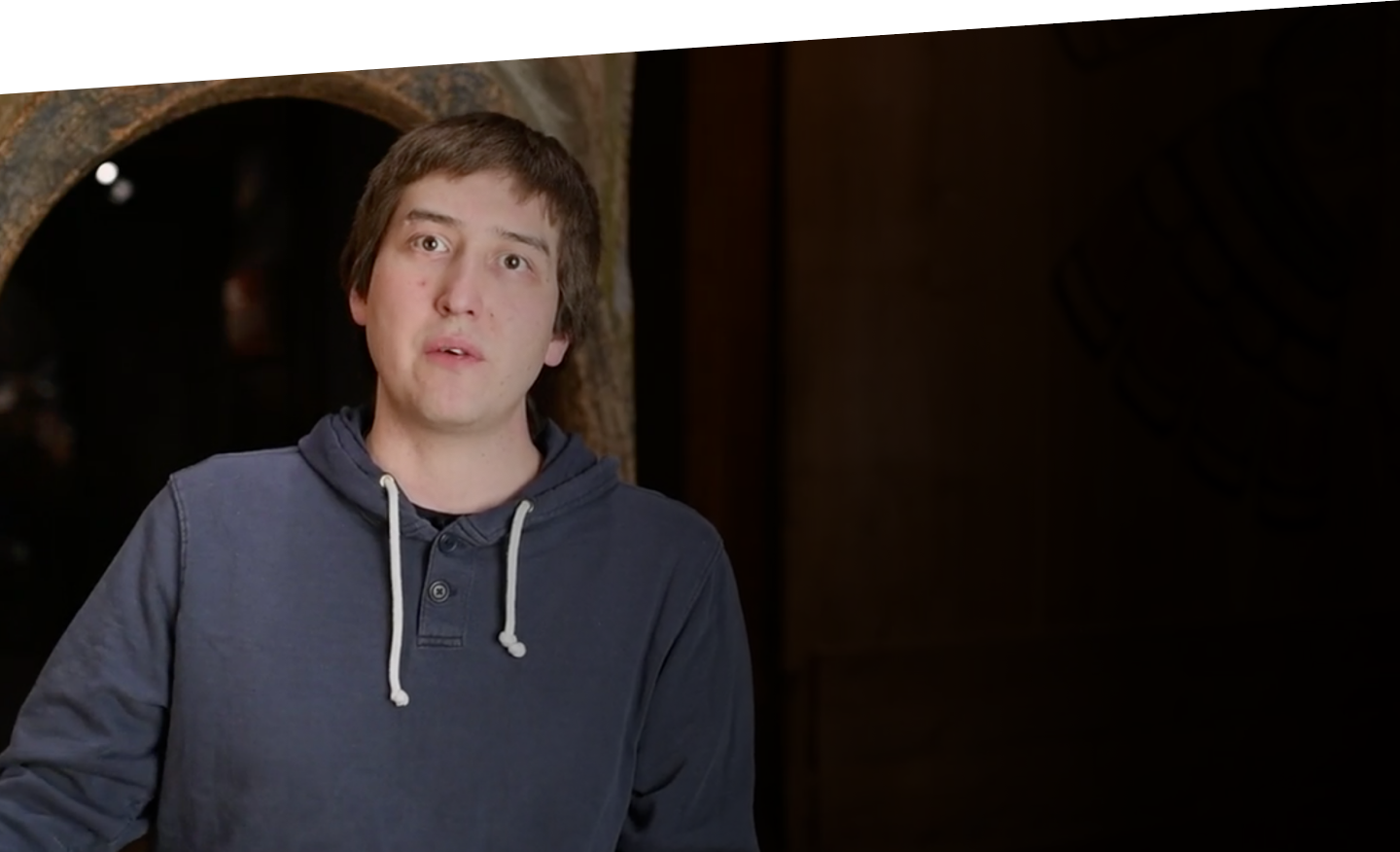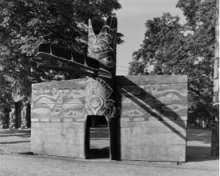JOURNEY
Origin
Talyu (formerly Talio) was a Nuxalk village at Taleomey Narrows on South Bentinck Arm in British Columbia’s central coast, 37 kilometres from the town of Bella Coola, where many Nuxalk people live today.
Images on this house entrance pole speak of supernatural beings of the sea, reflecting the Talyuumc People’s origin stories and close connection to the sea. The carving may have been the work of an influential hereditary leader at Talyu, Snuxyaltwa known as Chief Louie Snow. Chief Louie was a totem pole carver whose work ensured the survival of the distinctive Nuxalk carving style. He and his family were among the last people to live at Talyu.
Charles F. Newcome, who acquired the figures in 1913, described them—from bottom to top—as the Co-mo-que (Komokwa, Chief of the Undersea World), the chief Monster Fish, the Killer Whale, the True Whale, the Eagle of the Sea, and the Monster Fish Num-kath-le-que. The arch at the bottom of the pole formed the doorway to the chief’s house.
Entering the house through Komokwa’s mouth, you witnessed the history of his family. You could hear creation stories, like that about their ancestor Talio, the powerful supernatural woman who married the Chief of the Undersea World, bringing wealth to her people.
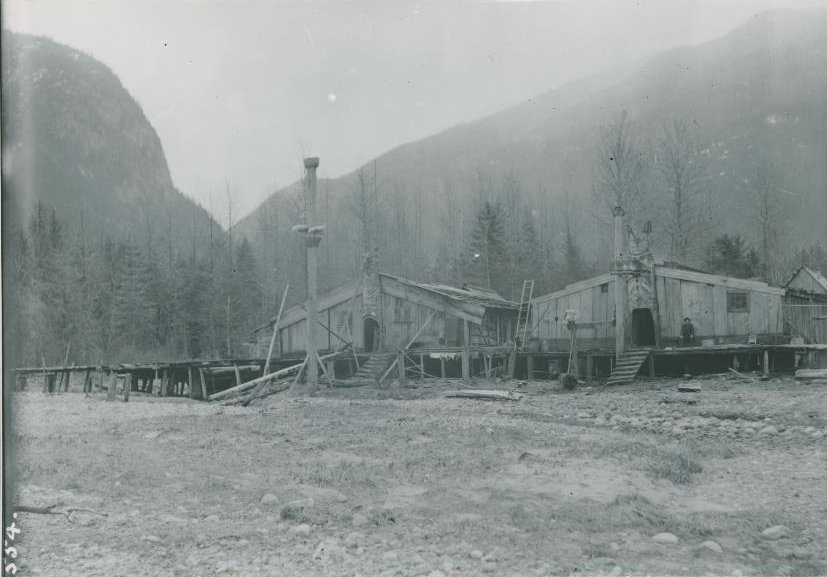
The houses of Chief Snow (Snuxyaltwa) and Chief Hemas with house frontal poles in the Nuxalk village of Talyu, viewed from the beach at low tide in 1913. Charles F. Newcombe photograph. PN10978.
The Story of Talio
An ancestor of the Talyuumc people was a powerful woman named Talio. She had gained so much supernatural energy that she attracted great wealth. All she had to do was touch her fish weir and it would fill with salmon. She would shoot one arrow and kill ten mountain goats.
The Talyuumc People used to live in one big village at the mouth of the Taleomey River, from which the powerful high-ranking woman got her name. Every morning at dawn she would go to the river where it met the inlet and bathe, facing the east holding her hands up to the sunrise and welcoming a new day.
In the undersea world, the ocean is the sky, and when Komokwa, the Chief of the Undersea World, looked upwards from his house under the sea he saw a beautiful shining star, which was Talyu, bathing in her sacred spot every morning. He fell in love and wanted to marry her but knew that only with a great amount of wealth would he be able to claim her as a wife. So, because he is the one who provides all the wealth of the sea on behalf of his brother, the Creator Komokwa amassed goods to give away at a big potlatch and built a splendid house inlaid with abalone and decorated with copper at Talio Point.
Then he sent a killer whale up to the fetch Talyu. Because of her supernatural power, Talyu could see that the killer whale was the canoe of the Undersea Chief and was able to get aboard. But what the people on shore saw was a killer whale swallowing their chief and so they began to mourn. Talyu was brought to the undersea kingdom where Komokwa feasted and potlatched and distributed to her people the wealth he had amassed. Then she agreed to marry him.
She still lives today beneath Talio Point in a cave below a beautiful house. In that area during the summer, the glacial water meets the salt water and causes a beautiful colour, which flows like hair, and that's said to be the hair of Talyu coming out from her cave.
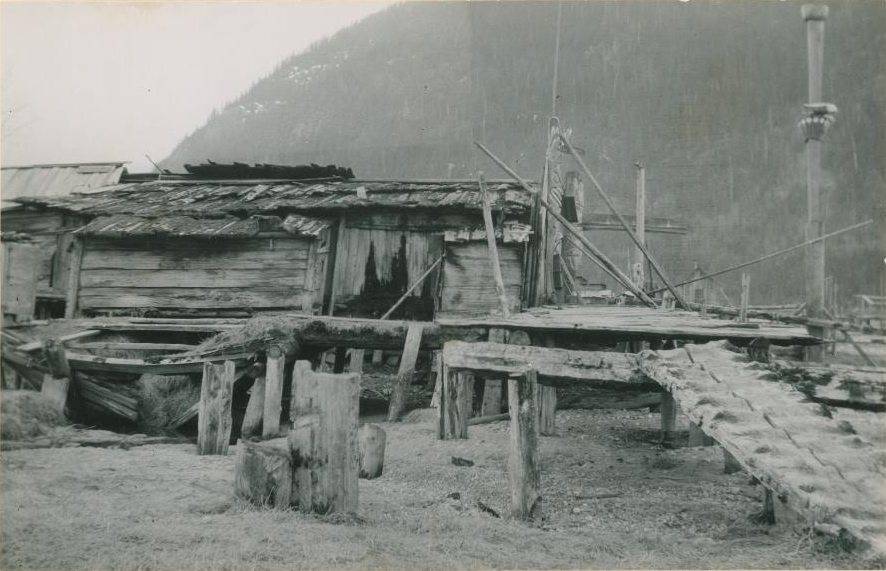
A side view of Talyu village showing the boardwalk and house frontal poles. PN284.
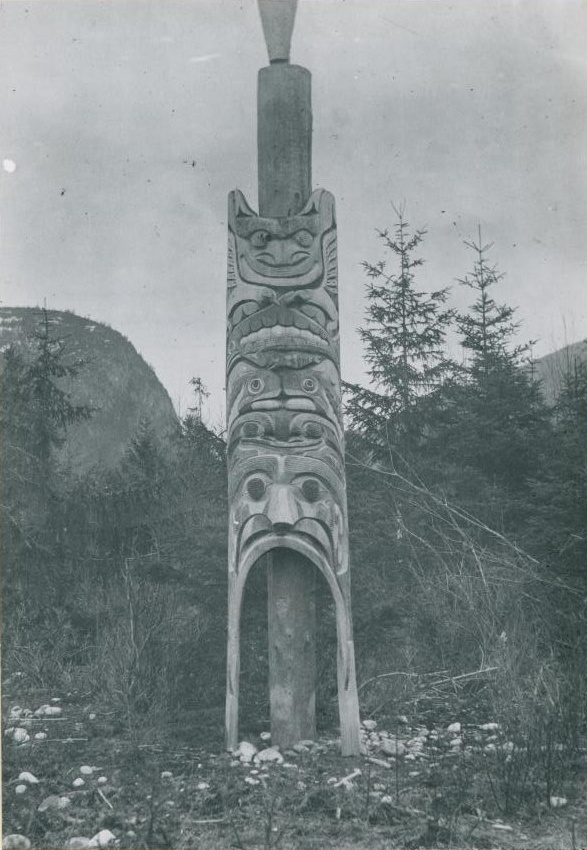
In the Talyu tradition, after the death of a chief and the end of the mourning period the family would take off the house entrance pole and place it against a post at his grave, as shown in this photograph taken in 1913 by Charles F. Newcombe. PN 1403.
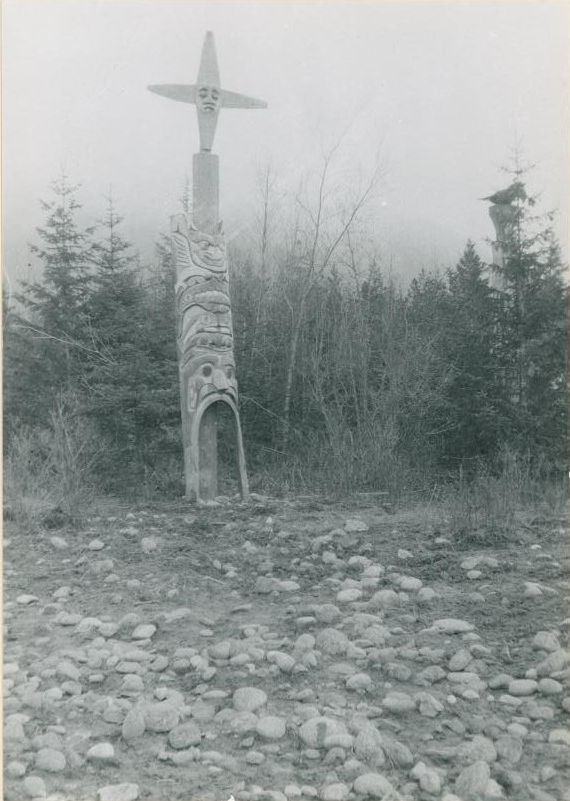
In 1913 the house entrance pole leaned against the grave post that is topped with a figure of the sun, which refers to the end of mourning and the continuation of the chief’s life in the spirit world. Charles F. Newcombe photograph. PN 618.
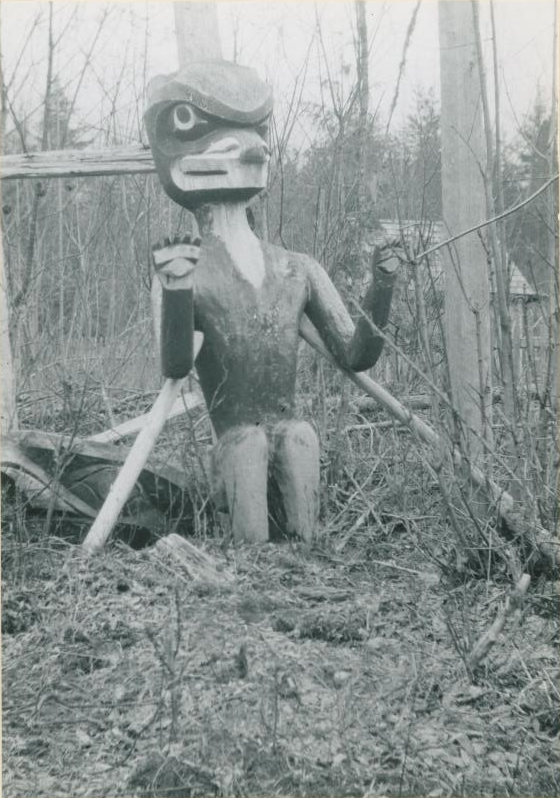
This Grizzly Bear carving is one of two mortuary figures (grave monuments) purchased by Newcombe at Talyu in 1913. Charles F. Newcombe photograph. PN 619.
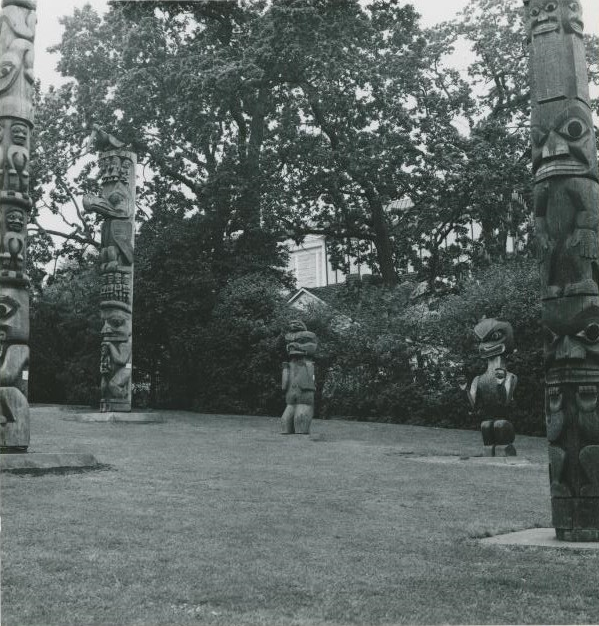
Replicas of the Grizzly Bear and Black Bear mortuary figures that Charles F. Newcombe purchased at Talyu in 1913 were carved by Mungo Martin, David Martin and Henry Hunt in 1954 and erected in Thunderbird Park. Andrew Niemann photograph, 1977. PN 13195-13.( Both mortuary figures are now on loan to the Museum or Archaeology & Ethnology at Simon Fraser University, Burnaby.)
JOURNEY
Removal
By the early 20th century the effects of disease and colonialism had reduced the population from several thousand to just 17 people, and the Canadian government forced the survivors to relocate to Bella Coola. In 1974, not long after the last families left, loggers burned the village.
Charles F. Newcombe was a medical doctor based in Victoria who made ethnographic collections for Canadian, American, and European museums in the first two decades of the 20th century, including for the Provincial Museum (now the Royal BC Museum). On April 3, 1913, Dr. Newcombe visited Talyu and purchased this house frontal pole, noting it was Chief Louie’s, for $45 (just over $2,000 today).
On the same day, he purchased Chief Hemas’s house entrance pole (RBCM 2308) for $50, a carved Grizzly Bear mortuary figure for $10, and a carved Black Bear mortuary figure for $5. Additional purchases at Talyu that day were an oolichan trap keep for $2.50, an oolichan net for $1.00 and dried berries for 20 cents.
When the First Peoples Gallery opened in 1977, Chief Louis’s house entrance pole was installed in Totem Hall, which groups together monumental carvings from many First Nations in a dramatic display. At that time, First Nations works were usually classed as anthropological artifacts or examples of material culture rather than as art. Now these works are recognized for their exceptional aesthetic qualities and superb workmanship.
JOURNEY
Today
Talyuumc People today may live away from the village site but they remain connected to Talyu and its history.
On October 11, 2019, four hereditary chiefs and about 20 family members gathered at the Royal BC Museum for a ceremony to mark the beginning of the repatriation process of Chief Snow’s pole.
Clyde Tallio (Snxakila), a descendant of a Talyuumc lineage, explains that poles such this are living treasures that represent the origins and history of the people of Talyu. But they are also about the present. They remind people that the history and traditions must be passed down to the next generation, so they can raise their poles in the future. "In our language we use a very important word, butelk — for those yet to come."
In February, 2023, Chief Snow and members of the community journeyed to Victoria and brought the pole home, where it will be shared as a teaching tool for young carvers and cultural leaders until it is returned to its final resting place in South Bentick Arm.
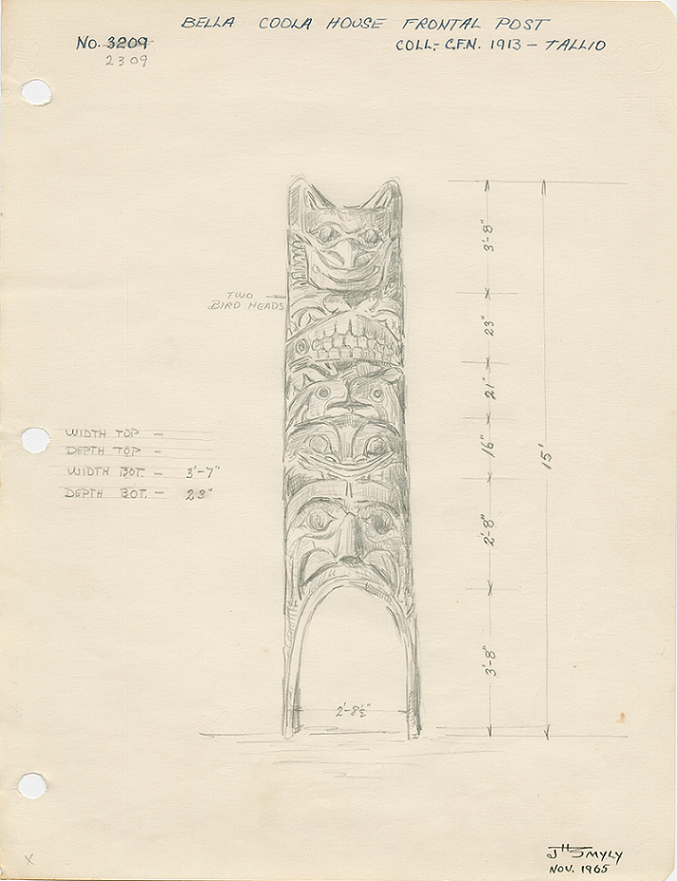
John Smyly, a museum technician, made a detailed drawing of the house entrance pole after it had come to the Royal BC Museum.
CONNECTIONS
Related Carvings
Ista
Ista Harmony Oud
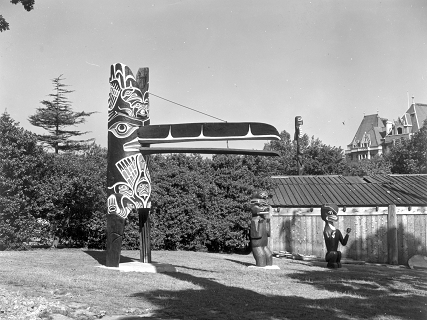
Ista is Nuxalk from Bella Coola. She received assistance with the project from Dale McCreery and local elders in Bella Coola.
Explore a curated selection of Royal BC Museum objects and contemporary photographs that inspire this community member to continue working in the tradition.

This crook knife was used to carve faces on their poles

They carve with this thing too, this crook knife
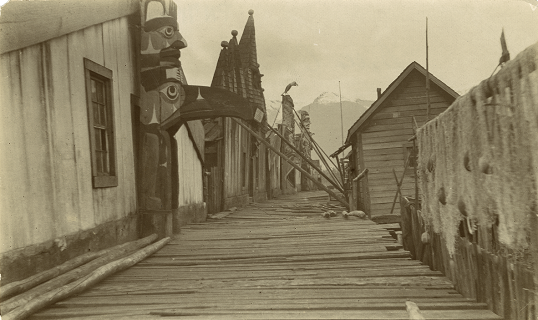
This village of ours is really beautiful!
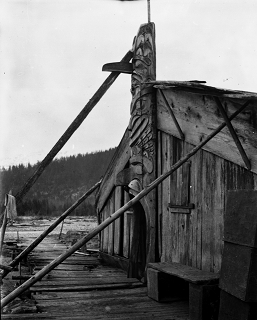
The pole is standing in the entrance of the house at Talyu.
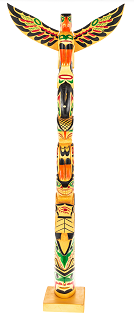
They were really skilled at making totem poles at that time.
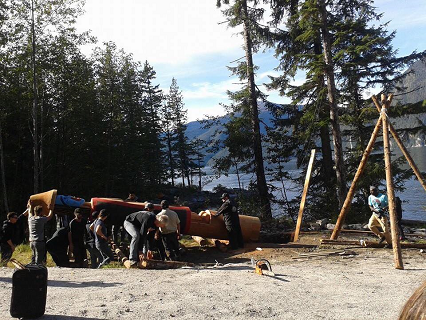
They are standing up the pole
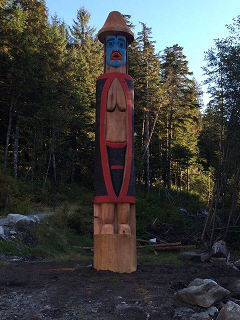
The pole is grounded now.
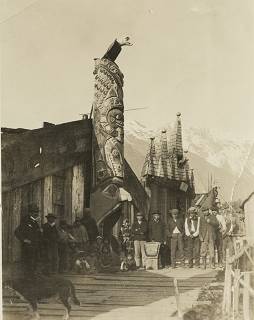
It has an open mouth on it, and they go in by it.
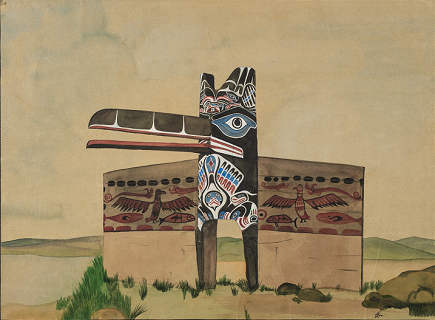
Do you see how it was all painted before?

It was the house of Snuxyaltwa where this entrance pole was (it’s now standing in the museum)
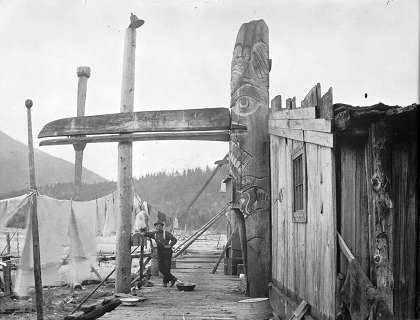
This is the house of Tallio Hans, this is their entrance pole. (also standing in the museum now).

They would do adze work on the face of the pole with a tool like this, an adze.

Maybe this was used as a wedge as they split the future entrance pole.


